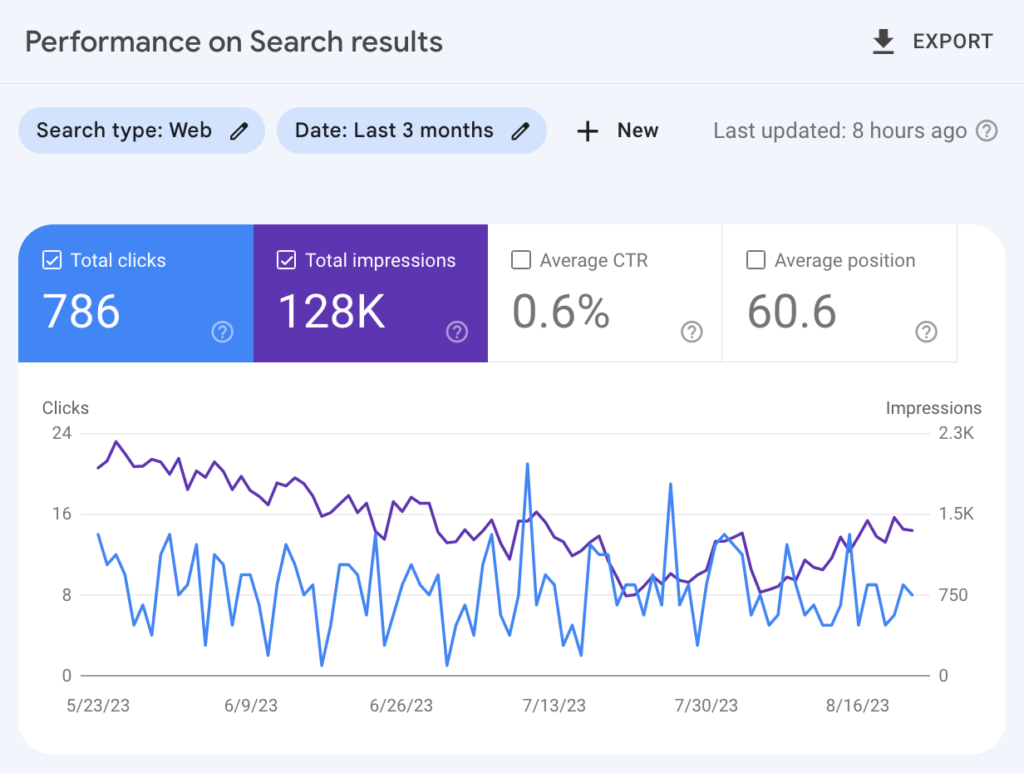Introduction to Google Search Console
Google Search Console (GSC) is an indispensable tool for website owners aiming to optimize their online presence. Provided for free by Google, GSC offers a suite of features designed to help you monitor, maintain, and troubleshoot your site’s visibility in Google Search results. By leveraging this tool, businesses can gain invaluable insights into how Google indexes and ranks their websites, thereby allowing them to make informed decisions to enhance their digital strategy.

One of the key features of Google Search Console is its performance report. This report provides detailed analytics on your site’s search traffic, including metrics such as clicks, impressions, click-through rate (CTR), and average position in search results. These metrics are essential for understanding how your content is performing and identifying areas for improvement.
Another critical feature is the URL inspection tool. This allows you to check the indexing status of individual pages on your site. By using this tool, you can see how Googlebot views your pages and identify any issues that might be preventing them from being indexed correctly. This is particularly useful for troubleshooting specific pages that aren’t appearing in search results as expected.
Sitemaps are also a vital aspect of GSC. Submitting a sitemap helps Google understand the structure of your website and ensures that all your pages are discoverable. This can significantly enhance the efficiency of Google’s crawling and indexing processes, leading to better search performance.
Overall, Google Search Console is a powerful tool for any business looking to improve its online visibility. By providing detailed insights into how your website interacts with Google Search, GSC enables you to make data-driven decisions that can boost your website traffic and enhance your digital marketing efforts. Understanding and effectively utilizing this tool is crucial for staying competitive in today’s digital landscape.

Setting Up Google Search Console for Your Website
Setting up Google Search Console (GSC) for your website is an essential step in optimizing your online presence and improving your website traffic. To begin, you need to verify that you own the website. Google offers several methods for this verification process:
First, you can verify ownership by uploading an HTML file to your website. Google provides a unique file that you must download and then upload to the root directory of your site. Once uploaded, return to GSC and click the “Verify” button to complete the process.
Another method is verifying through your domain name provider. Select your provider from the list provided by Google, and follow the specific instructions to add a DNS record. This method ensures comprehensive site ownership verification across all subdomains and protocols.
If you use Google Analytics, you can verify ownership by linking your Analytics account with GSC. Ensure you have ‘edit’ permissions in Google Analytics, and the property is using the same tracking code as the site you want to verify.
Similarly, you can verify ownership through Google Tag Manager. Just like with Google Analytics, you need to have ‘publish’ permissions in Tag Manager, and the container snippet should be installed on the site.
Once verification is complete, the next crucial step is to submit your sitemap. A sitemap is a file that lists all the pages on your website, helping Google understand its structure. To submit a sitemap, navigate to the ‘Sitemaps’ section in GSC, enter the URL of your sitemap, and click ‘Submit’. This enables Google to crawl and index your website more efficiently.
Additionally, configure your settings to receive alerts and notifications about critical issues affecting your website’s performance in search results. You can do this by going to the ‘Settings’ section in GSC and enabling email notifications. This proactive measure ensures you are promptly informed about any issues such as indexing problems, security threats, or manual actions, allowing you to address them swiftly to maintain optimal website performance.
Using Google Search Console to Monitor and Improve Website Performance
Google Search Console (GSC) offers a suite of tools and reports that enable businesses to monitor and enhance their website’s performance effectively. By leveraging these features, businesses can gain critical insights into their search traffic data and make informed decisions to optimize their online presence.
The Performance Report in Google Search Console is a vital tool for analyzing search traffic data. This report provides key metrics such as clicks, impressions, click-through rates (CTR), and average position in search results. By examining these metrics, businesses can identify trends and patterns in user behavior, allowing them to understand which keywords and pages are performing well. High-performing keywords are crucial as they drive the majority of traffic, and focusing on these can improve overall SEO strategies.
Additionally, GSC allows businesses to delve deeper into individual URLs through the URL Inspection Tool. This feature helps in identifying issues related to specific pages and provides insights on how to resolve them. By requesting indexing for updated or new URLs, businesses can ensure their content is visible to search engines, thereby improving their website’s discoverability.
Regularly reviewing the Coverage Report in Google Search Console is also essential. This report highlights which pages are successfully indexed by Google and flags any errors or warnings. Addressing these issues promptly ensures that all pages are indexed correctly, which is crucial for maintaining a seamless user experience and maximizing search visibility.
In conclusion, Google Search Console is an indispensable tool for businesses aiming to boost their website traffic. By systematically utilizing the performance reports, URL inspection, and coverage reports, businesses can optimize their websites, enhance user experience, and ultimately achieve better search engine rankings.
Advanced Tips and Best Practices for Maximizing Traffic with Google Search Console
Google Search Console (GSC) is a robust tool that offers invaluable insights for businesses aiming to enhance their website traffic. To fully harness its capabilities, it is essential to implement advanced strategies and best practices. One effective strategy is optimizing content based on search query data and user intent. By analyzing the Search Analytics report in GSC, businesses can identify the keywords and queries driving traffic to their site. This information allows for the refinement of existing content and the creation of new, targeted content that aligns with user interests and needs.
Addressing mobile usability issues is another critical aspect. With the Mobile Usability report in GSC, businesses can pinpoint and rectify problems that hinder the mobile user experience. Ensuring that a website is mobile-friendly not only improves user satisfaction but also enhances search rankings, as Google prioritizes mobile-first indexing.
Enhancing site performance, particularly focusing on Core Web Vitals, is another best practice. GSC provides detailed reports on metrics such as Loading, Interactivity, and Visual Stability, which are essential components of Core Web Vitals. By optimizing these areas, businesses can significantly improve their site’s user experience and, consequently, their search engine rankings.
Tracking and analyzing backlinks is crucial for improving site authority and ranking. The Links report in GSC offers insights into the external sites linking to your content. By evaluating the quality and relevance of these backlinks, businesses can build a stronger link profile, which is a significant factor in search engine algorithms.
To gain a comprehensive understanding of their site’s performance, businesses should use GSC in conjunction with other SEO tools and practices. Combining data from Google Analytics, keyword research tools, and competitive analysis platforms can provide a holistic view, enabling more informed decisions and strategies.
Finally, it is vital to regularly monitor Google Search Console for updates and new features. Staying informed about the latest developments ensures that businesses can continually adapt and refine their strategies to maximize website traffic effectively.



